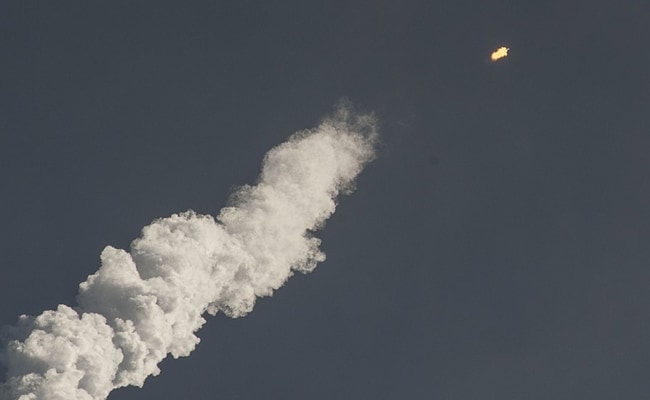2024-03-11 12:57:31

Multiple Independently Targetable Re-entry Vehicles technology has been developing for many years.
New Delhi:
India successfully conducted the first flight test of Multiple Independently Targetable Re-entry Vehicles (MIRV) with the Agni-5 Intercontinental Ballistic Missile. The Defence Research and Development Organisation (DRDO) conducted a successful test of the MIRV technology which was in development for several years, putting India on an elite list of nations that have the capability.
“Proud of DRDO scientists for Mission Divyastra the first flight test of indigenously developed Agni-5 missile with Multiple Independently Targetable Re-entry Vehicle (MIRV) technology,” Prime Minister Narendra Modi announced on X. A woman DRDO scientist was the mission lead and several women scientists played a significant role in the mission, sources said.
What Is MIRV Technology
Scientists at DRDO have been working on the Multiple Independently Targetable Re-entry Vehicles (MIRV) technology for many years. The technology allows a single missile like the Agni-5 to carry multiple warheads and target independently target multiple locations. The system developed by DRDO is equipped with indigenous Avionics systems and high-accuracy sensor packages, which ensured that the re-entry vehicles reached the target points within the desired accuracy, sources said.

Agni-5 is an Intercontinental Ballistic Missile (ICBM) that goes into space before re-entering the atmosphere. With the MIRV technology, multiple targets located at different locations can be engaged from the same missile with several warheads. These warheads could be nuclear or non-nuclear. The technology allows a missile to carry several bombs. These bombs can target locations that can be several hundred kilometres apart. Some MIRVed missiles can even hit targets separated by a distance of 1,500 kilometres.
The capability allows states to engage multiple targets to have a first-strike move for an edge during times of war. Agni-5 missile has been tested earlier, but only with a single warhead. A missile, when it re-enters the atmosphere, can reach up to at least five times the speed of sound (5 Mach) with the help of Kinetic Energy as it loses altitude and the effectiveness of Anti-Missile Defence (AMD) systems is reduced with the MIRV technology as AMD is primarily deployed to engage single targets.
The Agni-5 missile has an operational range of at least 8,000 km that can target cities, the MIRV technology puts multiple cities within that range under the target, providing a broader safety net with several locations under the missile’s reach.
Ahead of the test, a NOTAM alert was issued last week. NOTAM, meaning notice to airmen, are alerts issued to designate an area as a no-fly zone. The alert was for the Bay of Bengal area, which was seen as a clear indication India is planning a missile test that may take place anytime between March 11 and 16. This no-fly zone earmarked in the NOTAM alert spans 3,500 kilometres, well into the south of the Bay of Bengal.
The technology was originally developed in the 1960s and the US, UK, Russia, France and China can use it. For example, a Russian MIRVed missile under development may be able to carry up to 16 warheads, each in a separate re-entry vehicle. There are reports that Israel is also working on developing the technology.
The technology requires a combination of large missiles, small warheads, accurate guidance, and a complex mechanism for releasing warheads sequentially during flight.
The US was the first country to develop MIRV technology, deploying a MIRVed Intercontinental Ballistic Missile (ICBM) in 1970 and a MIRVed Submarine-Launched Ballistic Missile (SLBM) in 1971. The Soviet Union quickly followed suit and by the end of the 1970s had developed their MIRV-enabled ICBM and SLBM technology.
DRDO MIRV,What is MIRV,Agni-5 Missile ICBM,Agni-5 MIRV,India MIRV technology
Source link
![]()



